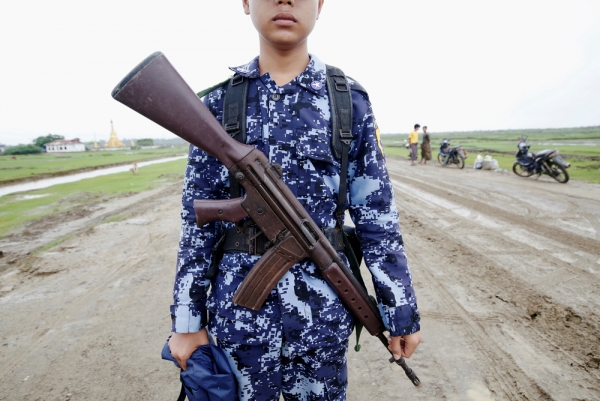More than 1,000 people from twenty villages in the Rakhine state have fled the fighting according to a local lawmaker and administrator on January 10th. An estimated seven civilians, including four Rohingya Muslims, have died and about 30 residents were injured in the past 11 days of fighting according to a local aid worker. The Arakan Army (AA) is a group claiming to represent the ethnic Rakhine population. The Buddhist Rakhine ethnicity represent one of 135 officially recognized ethnicities in Myanmar. The internally displaced population has risen well over 100,000 people.
AA spokesperson Khine Thukha stated that “They are destroying villages along the Mayu River in Buthidaung and Rathedaung. They are using the four cuts strategy in their operations.”
The aforementioned strategy is a counterinsurgency tactic to deny opposition groups the ability to utilize local resources. In contrast, Colonel Win Zaw Oo, a spokesman for the Myanmar military’s Western Command responsible for Rakhine state, said that government soldiers are conducting clearance operations as a response.
Despite claims by both the AA and the Myanmar military that they avoid targeting civilians, rights groups accuse the military of indiscriminately harming civilians. UNICEF and Amnesty International documented abuse of civilians by the AA as well, including forced labor and abductions. UNICEF said the number of child casualties continues to rise as the conflict continues. Another problem comes from the use of landmines in an area previously devoid of such devices.
For humanitarian organizations, access is blocked or very limited in eight of Rakhine’s seventeen districts. Similarly, on February 3, the government reimposed an internet shutdown reimposed in four northern townships, five months after they partially lifted it. Both make it more difficult to provide humanitarian support for victims and to document civilian casualties.
To read more, visit:
https://www.mmtimes.com/news/villagers-flee-fighting-rakhine-state.html
Author: Rachel Warner; Editor Teagan Foti




